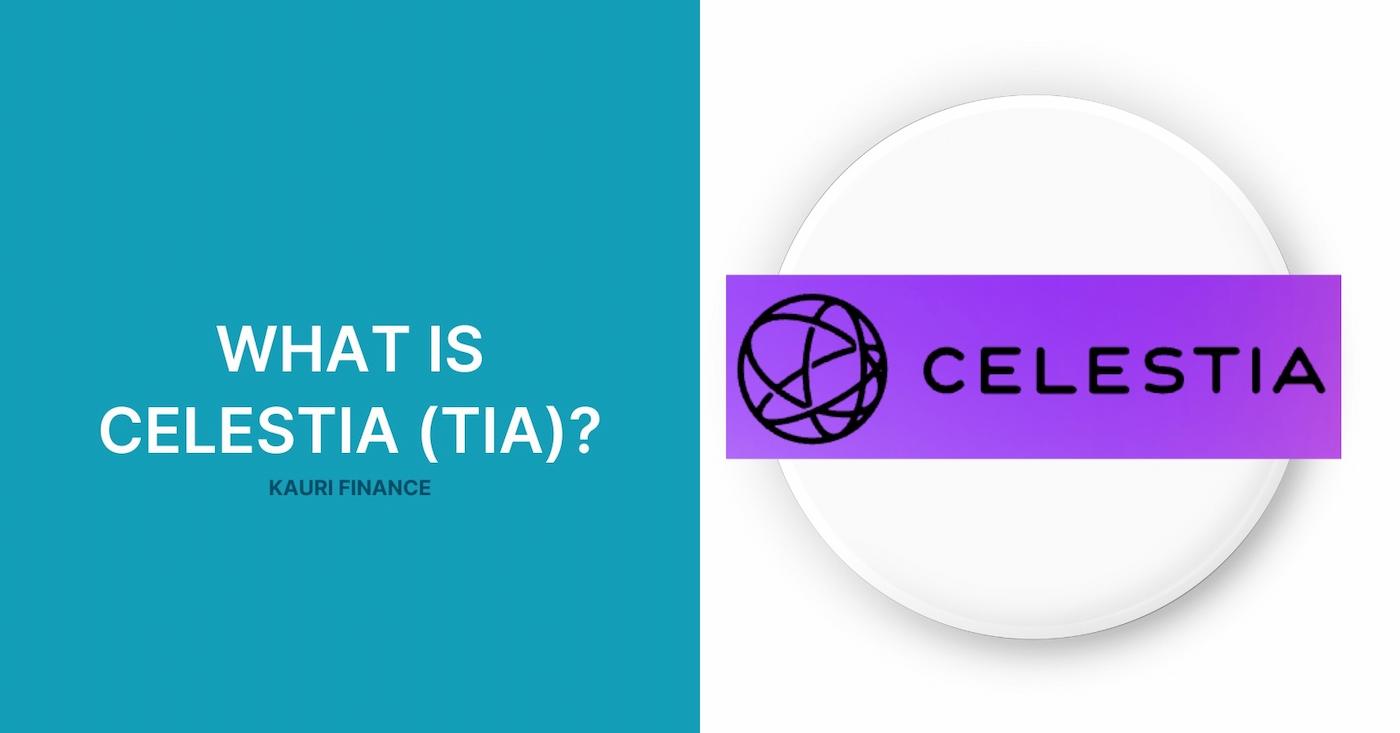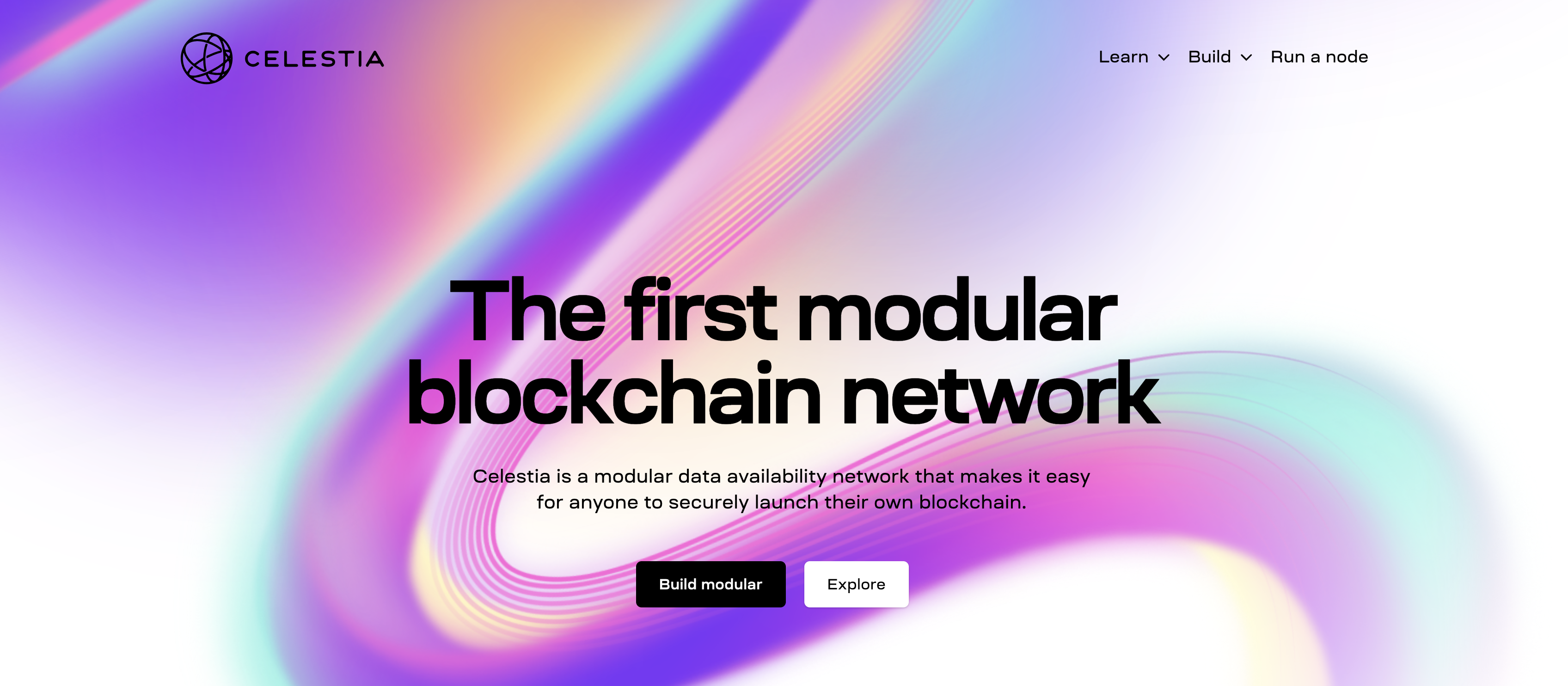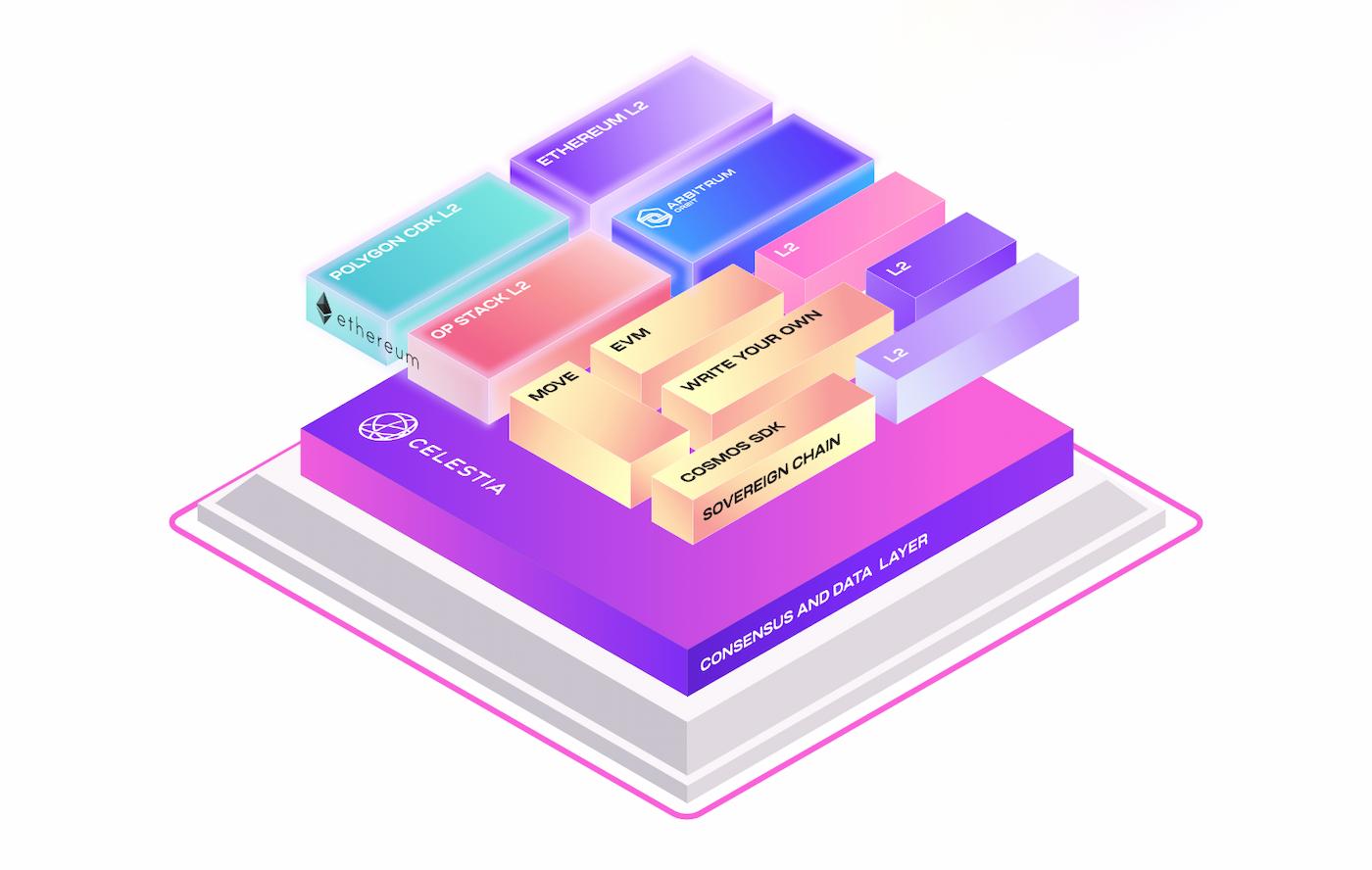
What is Celestia (TIA)?

As blockchain technology continues to evolve, scalability remains a pivotal challenge, constraining the potential for widespread adoption and functionality. Traditional blockchains, while foundational, often grapple with a critical trade-off among scalability, security, and decentralization — a conundrum known as the blockchain trilemma. In response to these limitations, innovative solutions like Celestia are emerging to redefine the architectural standards of blockchain networks.
Celestia distinguishes itself as a modular blockchain, specifically engineered to enhance scalability by segregating the data availability layer from other blockchain operations. This separation allows for greater flexibility and efficiency in processing transactions. The introduction of Celestia into the blockchain landscape has not only sparked interest among developers and tech enthusiasts but also attracted attention from major industry players, signaling a significant shift towards more scalable blockchain infrastructures. This article delves into how Celestia addresses the persistent issue of scalability while maintaining the robust security and decentralization that blockchains are known for.
Blockchain Trilemma
The blockchain trilemma, a term coined by Ethereum co-founder Vitalik Buterin, poses a significant conceptual challenge within blockchain development. It suggests that a blockchain system can only achieve two of the following three properties at any one time: decentralization, scalability, and security. This trilemma underlines a fundamental issue with traditional, or monolithic, blockchains like Bitcoin and Ethereum. These blockchains aim to maintain decentralization and security but often at the cost of scalability. As these networks grow in size and usage, they struggle to process transactions quickly and affordably without compromising on security or becoming more centralized, limiting their potential for mass adoption.
What is Celestia?

Celestiastands out as a modular blockchain solution designed primarily as a data availability layer. This innovative approach allows it to focus solely on consensus and ensuring data is readily available, without being burdened by transaction execution. This separation of concerns is pivotal in addressing the blockchain trilemma by enabling enhanced scalability without sacrificing security or decentralization.
The origins of Celestia trace back to the LazyLedger whitepaper penned by Mustafa Al-Bassam in 2019. Al-Bassam envisioned a blockchain framework that eschewed traditional computation and execution tasks, focusing instead on being a robust data availability layer. This foundational concept has evolved into Celestia, which today stands as a distinct implementation of these principles, aiming to revolutionize how blockchains achieve scalability while maintaining the core tenets of decentralization and security.
Function of Data Availability
Data availability is a crucial aspect of blockchain technology, referring to the assurance that all transaction data within a blockchain is accessible to all network participants. This transparency allows users to fully verify network activity and maintain the integrity of the blockchain. However, data availability presents a scalability challenge for traditional blockchains like Ethereum. As these networks expand, the requirement for each node to process and store all transaction data becomes a bottleneck, significantly hampering transaction speed and increasing costs.
Celestia addresses these scalability issues by decoupling data availability from transaction execution. This modular approach allows Celestia to focus solely on ensuring that data is available without the responsibility of executing transactions. By doing so, Celestia can scale more efficiently by offloading transaction processing to other layers, thus enhancing overall network performance without compromising security or decentralization.
How Celestia Works?
Celestia's architecture exemplifies a modular blockchain design, focusing primarily on consensus and data availability. This separation from transaction execution allows Celestia to optimize its network for high throughput and low latency in data handling, which are essential for scalability.
- Data Availability Proofs: One of Celestia's core technologies is data availability proofs. This mechanism enables the network to verify that all data related to transactions is indeed published and accessible, without requiring nodes to hold the entire dataset. This is crucial for maintaining transparency and security in a scalable manner.
- Erasure Coding: Celestia utilizes erasure coding to enhance data redundancy and recovery. By transforming blocks of data and adding redundant pieces, it ensures that data can be recovered even if parts of it become unavailable. This method significantly increases the fault tolerance of the network.
- Data Availability Sampling: Alongside erasure coding, Celestia employs data availability sampling. This technique allows nodes to verify data availability through random sampling of block data rather than downloading the entire block. This reduces the bandwidth and storage requirements for nodes, facilitating scalability and faster validation processes.

Celestia's Ecosystem and Development
Since its inception, Celestia has marked several significant milestones that underline its evolving influence within the blockchain sector. The launch of its mainnet in October 2023 was a pivotal moment, establishing Celestia as a foundational layer in the modular blockchain landscape. This launch was accompanied by a surge in interest and valuation, highlighting the market's recognition of its potential.
- Partnerships: Celestia has formed strategic alliances with major blockchain platforms such as Polygon and Optimism. These collaborations are instrumental in integrating Celestia's data availability solutions into broader blockchain ecosystems, enhancing scalability across multiple platforms. For instance, the integration with Polygon's Chain Development Kit allows developers to utilize Celestia as a plug-in component, broadening its applicability and utility.
- Future Roadmap: Looking forward, Celestia continues to expand its capabilities and reach. The roadmap includes further technical enhancements such as improved data availability techniques and expanded support for diverse blockchain operations. These developments aim to cement Celestia's role as a crucial infrastructure for next-generation blockchain applications.
TIA Token
TIA token is integral to the Celestia network, serving multiple critical functions. As a proof-of-stake (PoS) network, TIA is used for staking, enabling token holders to participate in network consensus and security. Additionally, TIA facilitates governance, allowing stakeholders to vote on network upgrades and policy changes, ensuring a decentralized control mechanism.
TIA's tokenomics are designed to sustain the network's growth and stability. The token supply is capped, introducing a deflationary aspect intended to preserve value over time. Fees collected from data availability services paid in TIA further support the network's economic foundation, incentivizing both users and developers to hold and use the token within the ecosystem.
Advantages and Potential Drawbacks
- Advantages: Celestia offers distinct benefits, primarily its modular architecture which significantly enhances scalability and efficiency for blockchain developers. This specialization allows developers to build more complex applications without being hampered by the underlying blockchain constraints. The focus on data availability also ensures high levels of security and integrity for transactions.
- Challenges: Despite its innovative approach, Celestia faces challenges common to new blockchain technologies. Its success depends on widespread adoption and integration across various blockchain platforms. Additionally, as a relatively new player in the market, Celestia must prove its long-term viability and compete against established blockchains that are also advancing scalability solutions.
Conclusion
Celestia stands out as a transformative force in the blockchain landscape, specifically addressing the longstanding blockchain trilemma of balancing scalability, security, and decentralization. By decoupling data availability from transaction execution, Celestia offers a novel approach that could significantly enhance the scalability of blockchain systems without compromising their security or decentralized nature.
At Kauri Finance, we are dedicated to merging the best of traditional financial services with the innovative potential of blockchain technology. By leveraging Kauri Finance's Web3 Wallet, users can engage with Celestia and other blockchain technologies safely and efficiently, benefiting from our platform’s enhanced security features and intuitive design.
